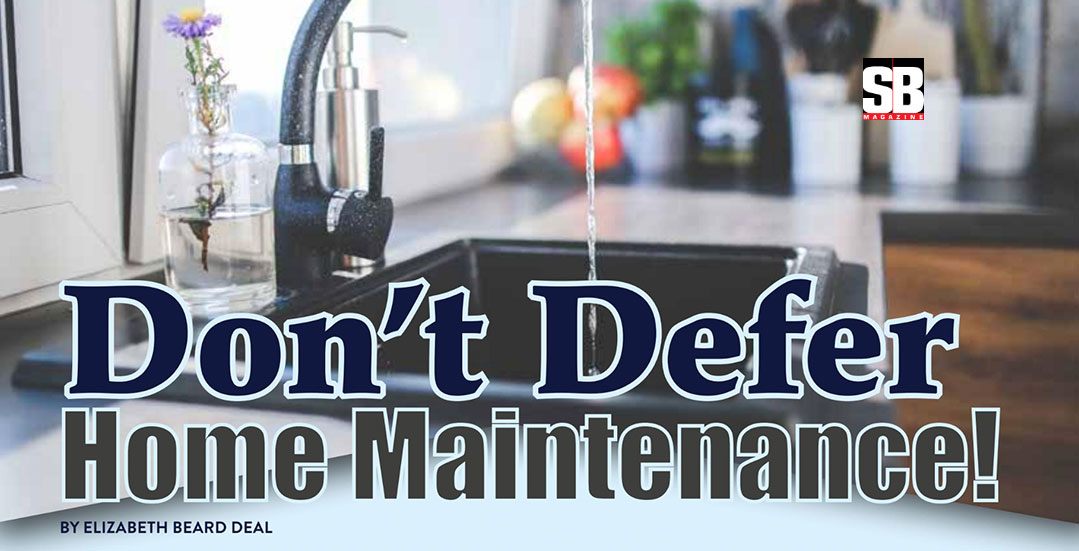One of Benjamin Franklin’s famous sayings was, “An ounce of prevention is worth a pound of cure.” Yes, home maintenance means adding more chores to your list. But deferring maintenance is likely to be time consuming and costly. Performing home maintenance tasks can prevent larger problems or deterioration, extend the life and value of the property, and create a safe and comfortable place to live.
To make home maintenance less painful, include home maintenance costs in your monthly budget or set aside funds in your emergency savings account for unexpected repairs.
You can identify potential issues around the home when you engage in ongoing inspections of your property. Here are some ideas for keeping up with home maintenance:
Check the inside of your home for cracks, stains, or damage on your walls, ceilings, or floors. Follow recommended maintenance schedules for appliances like refrigerators, dishwashers, washing machines, ovens, and stoves. Clean and check fireplaces and chimneys. Install proper insulation and weatherstripping for energy efficiency.
Check the exterior of your home for cracks, leaks, or damage to the roof, brick, siding, gutters, downspouts, windows, doors, driveways, walkways, fences, foundation, and the overall structure.
Pest control is important to the maintenance of a home, keeping unwanted pests or creatures away from the home to prevent health problems to people or damage to the home and property. It’s a good idea to inspect areas inside and outside the home, install or repair screens and seal cracks and other potential places of entry. You can use insecticides, traps, baits, or call in professional pest control services.
Maintaining the trees in your yard is good for the health of the tree and helps prevent any safety issues. Pruning, mulching, fertilizing, and watering are all important parts of caring for trees, depending on type, age, and size of tree. Inspections help identify pest problems or disease. Consult a certified arborist to inspect and report on the health of your trees. A certified arborist focuses primarily on the long-term health and maintenance of trees, but also removes trees. An arborist can help you determine if a tree can be saved. A tree removal specialist primarily focuses on the safe and efficient removal of trees.
Maintain the lawn area by trimming trees and shrubs, cutting grass, cleaning out gutters, addressing any drainage issues, and inspecting the irrigation system.
Stay on top of safety measures. Some examples are installing, checking, repairing, or replacing smoke alarms, fire extinguishers, carbon monoxide detectors, alarm systems, door and window locks, first aid kits, indoor and outdoor lighting, stairs, thresholds, and railings.
Regular cleaning and organizing the home can help with air quality by removing dust and allergens and keep furnishings and floorings in top condition.
Maintaining the plumbing in your home is essential for preventing issues, avoiding expensive repairs, and keeping the system in good operating condition. Consider hiring a professional plumber for periodic plumbing inspections. This typically includes ensuring proper water pressure, checking for leaks in pipes, fixtures, or appliances, checking water heaters, cleaning drains, and inspecting backflow prevention devices and shut-off valves, cleanouts, and access panels for accessing plumbing components.
Don’t mess with electricity! Call in a professional electrician to inspect your home’s electrical systems to keep your home safe or fix any issues. They can check for faulty wiring or loose connections, test outlets, replace worn out parts, and ensure proper grounding.
Keeping your heating, ventilation, and air conditioning (HVAC) system properly maintained helps it run efficiently and save energy. Having it serviced once a year by a professional is recommended. Tasks may include cleaning or changing out filters, cleaning vents and ducts, checking thermostats, inspecting, and cleaning outdoor units and servicing the furnace.
Keep Up With Home Maintenance
Create a checklist so all areas and systems are reviewed.
Schedule your review of items on the checklist. Some areas may need to be reviewed more often than others.
Identify and address issues promptly.
Hire a professional when needed for repairs or replacements.
Keep receipts, records, and warranties for any work done.
Happy Homeownership!









